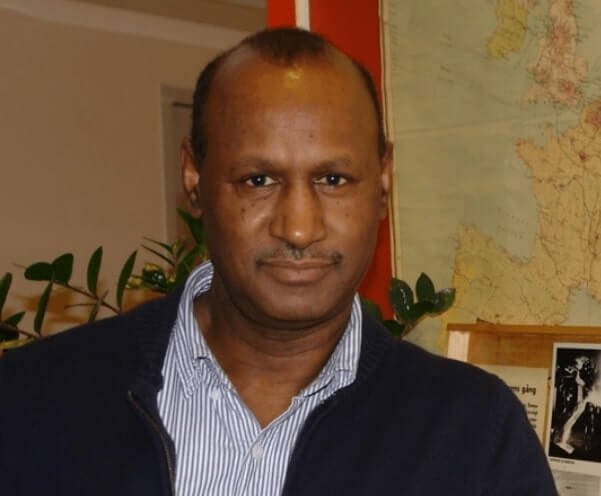Tsegaye Tegenu, PhD
2024-07-02
My vision statemen “Creating a Post-Scarcity Economy, Thriving Middle Class, and Self-Reliant Society”, describes long-term aspirations and a desired future, covering a generation, an average period of 20-25 years. As I have said, vision helps to formulate goals and identify policy areas and strategies. But there is a question why people of the country should look too far into the desired future. People need justification to keep them on track. Vision needs a mission statement which explains what people do, for whom they do it, and why they do it.
Mission answers the question “who do we do it for” and is shaped by the organization’s values, purpose, and desired outcomes. In the context of Ten-Year Development Plan of the government, which aims to become an “African Beacon of Prosperity,” different stakeholders might envisage different missions based on their priorities and values. For instance, political leaders can be interested in showcase projects (see Part Eight), to get political attentions and/or attract foreign investment by executing high and/or low-profile projects that can demonstrate economic potential. There is still a fundamental question: showcase projects for whom, for members of the ruling political party, investors or for the ordinary people?
My Mission Statement
In the case of Ethiopia, where there is a fast population growth, a vision can only be successful if it is driven by people-centered and place-based development approaches and objectives.
People-centered approaches are rooted in the values of inclusivity, human dignity, and equity. These approaches focus on ensuring that all individuals, regardless of their background, have the opportunity to benefit from economic growth and development. The emphasis is on creating a fair and just society where every person’s well-being and potential are prioritized. The desired outcomes of people-centered approaches include the creation of policies and programs that focus on the well-being and potential of individuals.
Place-based approaches emphasize local relevance and community empowerment. They prioritize understanding and leveraging the unique characteristics and resources of each region to develop tailored solutions. The focus is on empowering local communities by involving them in the decision-making process and ensuring that development initiatives are relevant to their specific needs. The primary outcome of place-based approaches is the creation of development strategies that are specifically tailored to the unique needs and strengths of different regions.
Mission Statement:
“To create a post-scarcity economy that enhances the well-being of all citizens through people-centered and place-based approaches, focusing on job creation for the unemployed, income growth for those employed, regional development, and increasing universal coverage of basic services.” I have considered population growth pressure forces (multiplication of child-rich households, labor force growth and internal migration-led urbanization) to formulate the mission statements. In what follows I will explain key elements of the mission statement:
1. Job Creation for the Unemployed (21 million persons)
The purpose of this key elements of the mission is to provide employment opportunities for those without jobs, reducing unemployment rates and fostering economic stability. Unemployment rate is widely used as measure of labor market performance. It highlights potential matches between available labor supply (people) and available demand (jobs) at a given point in time.
According to ILO statistics (2021), the unmet need for employment among the population (labor underutilization) for Ethiopia is 35%. That means out of the 60 million potential labor force of the country, 21 million persons are unemployed persons, discouraged searchers, and underemployed (short-time and involuntary part-time) persons. A high unemployment rate indicates that the economy is failing to create sufficient jobs for those seeking employment. This not only exacerbates social issues and extends the hardships faced by families but also diminishes the country’s appeal to foreign investors, resulting in reduced investment inflows.
The question is how do you create jobs for 21 million people? What are your approaches and strategies in creating sustainable job opportunities and reduce high unemployment rates over time.
2. Income Growth for those Employed (39 million persons)
This is another key element of the mission and the purpose is to ensure that employed individuals (about 39 million people of the country) experience real income growth, improving their quality of life and financial security.
In Ethiopia, the average income levels of those employed persons are not increasing over time. Stagnant income growth can occur due to a variety of reasons, often interconnected and complex. In Ethiopia it is mainly related to low productivity growth (output per worker doesn’t increase) and there are prolonged periods of slow economic growth. There is also a high supply of labor (many people looking for jobs) and this has kept wages low because employers have less incentive to raise pay. Plus, as we currently observe, wages do not keep pace with the cost of living, real incomes (adjusted for inflation) remain stagnant or even declined.
Achieving income growth requires a comprehensive and multifaceted approach that includes sound economic policies, investment in education and infrastructure, labor market reforms, and technological advancement. In Ethiopia in particular there is a need for economic structural transformation that involves shifting from traditional, often low-productivity sectors to more diversified, high-productivity industries. This requires comprehensive strategies including diversification, industrialization, innovation, infrastructure development and financial sector reform.
3. Regional Development
The purpose of this key element of the mission statement is to promote balanced development across all regions, reducing disparities and ensuring that all areas have the infrastructure and opportunities they need to thrive. Regional development can involve urban, rural, or less-developed regions.
In Ethiopia, the causes of regional development needs are influenced by rapid population growth in the country. High population density in rural areas has strained local resources such as land, water, and food, leading to reduced agricultural productivity and sustainability. Overcrowded rural areas have limited economic opportunities beyond subsistence farming, causing poverty and migration.
High population density in poor resource regions leads to internal migration causing overcrowded cities and towns, straining infrastructure, housing, and services. This makes urban areas less livable and sustainable. Rapid urban growth has also led to poorly planned expansion, resulting in inefficient land use, traffic congestion, and environmental degradation.
Regional inequalities are exacerbated by lack of regional planning. Poorly coordinated or absent regional planning resulted in uneven development, where some regions are neglected. Government policies have failed to equitably distribute resources and investments.
Regional development model under cultural construct such as ethnicity, could not serve as mechanisms for regional development. The idea and policy of territory control based on ethnic criteria has led to internal conflicts and instability.
I think there is a need for a model of regional development based on economic perspective. This model takes into account not only improving the economic well-being and quality of life of the specific geographic areas, but also distribution of resources. It explains “the territorial division of labor (who does what, where and when, what rewards they receive and in what relationships they stand to other people and economic activities in other places) and the constantly evolving resource endowments on which it depends”.
This economic model focus on building and upgrading infrastructure in underserved regions, promoting regional economic zones with tax incentives and other benefits, and support local innovation and technology hubs.
4. Increasing Universal Coverage of Basic Services
The fourth key element of the mission statement is increasing universal coverage of basic services. The purpose is to ensure that all citizens have access to essential services such as healthcare, education, clean water, and sanitation.
The percentage of universal coverage of basic services in Ethiopia varies across different services such as water, sanitation, healthcare, and education. Concerning clean water, according to UNICEF and other reports, around 66% of Ethiopians had access to at least basic drinking water services in 2020. Access to basic sanitation services is lower, with around 7% of the population having access to safely managed sanitation services as of 2020.
According to the Global Health Expenditure Database, only about 48% of the population had access to essential health services in 2017. Secondary education enrolment rates are significantly lower, with gross enrolment rates around 37% for lower secondary and much lower for upper secondary. According to the World Bank, as of 2019, around 45% of the Ethiopian population had access to electricity. This figure has been improving but still reflects a significant gap, particularly in rural areas.
While Ethiopia has made some progress in improving access to basic services, achieving universal coverage remains a significant challenge. The percentages mentioned above highlight the gaps and areas needing further investment and development. There is a need for expanding public service networks, improving service delivery mechanisms, and ensuring equitable access across different regions and communities.
Conclusion
A mission statement that focuses on job creation, income growth, regional development, and increasing universal coverage of basic services aligns well with the vision of a post-scarcity economy. It ensures that the needs of communities and individuals are met through sustainable, inclusive, and strategic approaches. By clearly articulating these priorities and reporting annual progress in an engaging manner (through community forums), the mission statement can inspire confidence and support among all stakeholders.

















